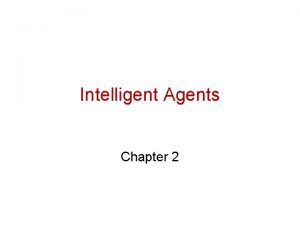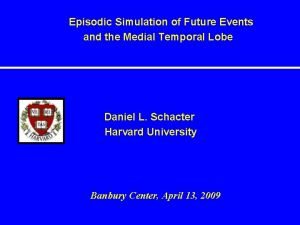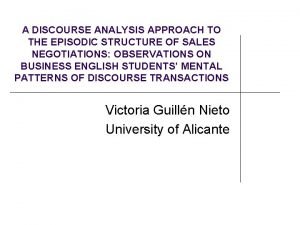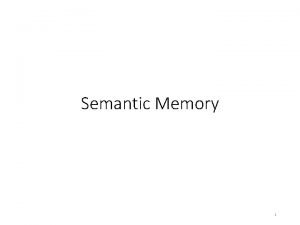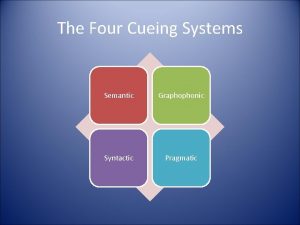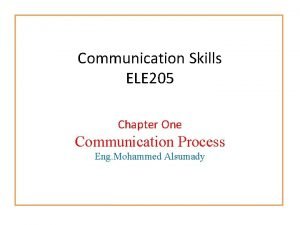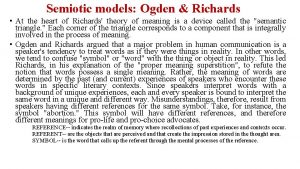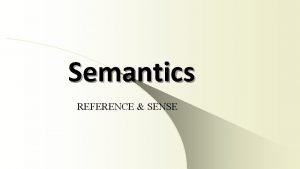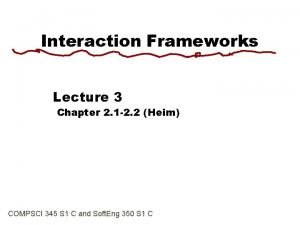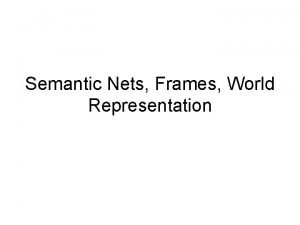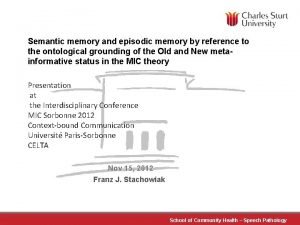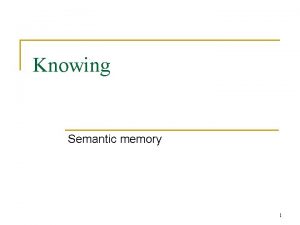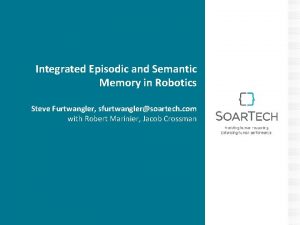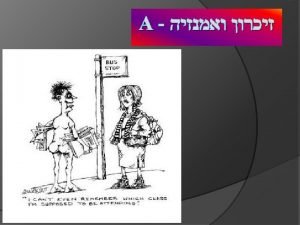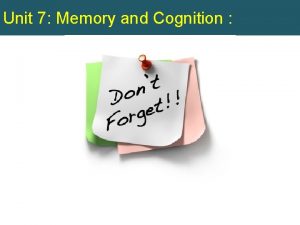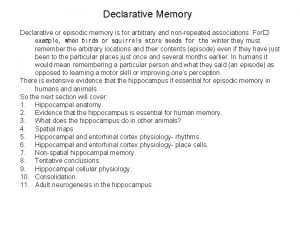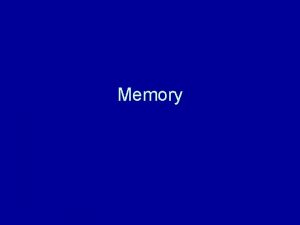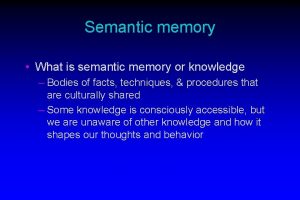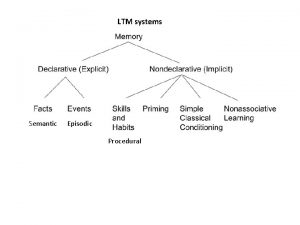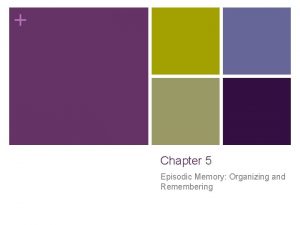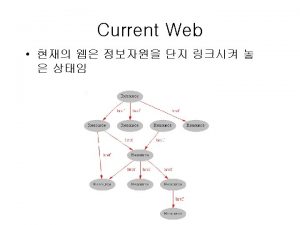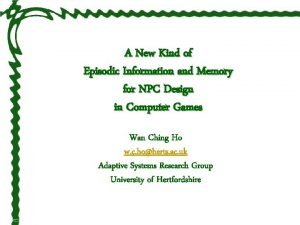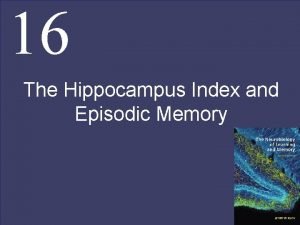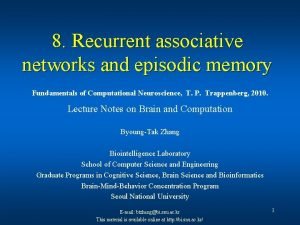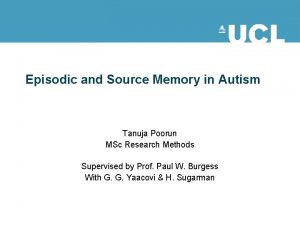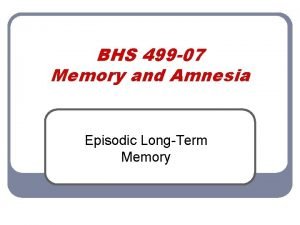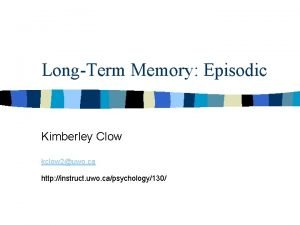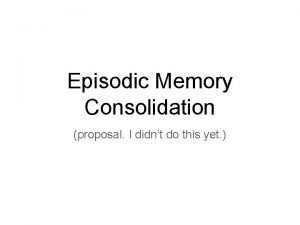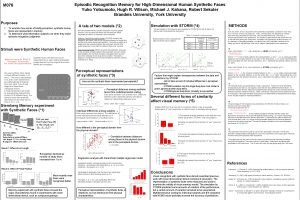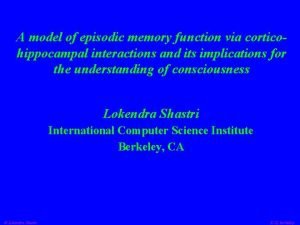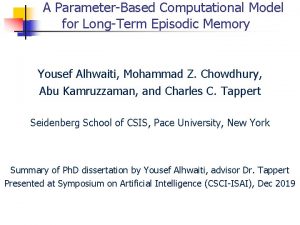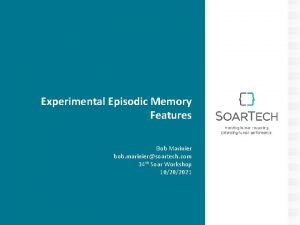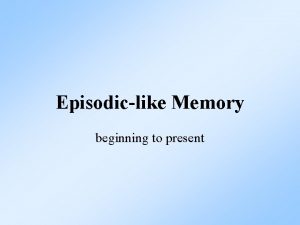Chapter 3 Episodic and Semantic Memory Memory for































































































- Slides: 95

Chapter 3 Episodic and Semantic Memory: Memory for Facts and Events

3. 1 Behavioral Processes

3. 1 Behavioral Processes • Episodic (Event) Memories and Semantic (Fact) Memories How Humans Acquire and Use Episodic and Semantic Memories • When Memory Fails • Learning and Memory in Everyday Life— Total Recall! The Truth about Extraordinary Memorizers • Models of Semantic Memory 3 •

Episodic (Event) Memories and Semantic (Fact) Memories • Who sailed across the ocean blue in 1492? • Christopher Columbus, of course. • How many people remember where they were and what they were doing when they first heard about Columbus? 4

Episodic and Semantic Memories • Episodic memory—for a specific autobiographical event within a spatial and temporal context Most students do not remember where and when they first heard about Columbus. • Semantic memory—for facts or general knowledge of the world But, most students know about Columbus. 5

Comparing and Contrasting Episodic and Semantic Memories 6

Episodic and Semantic Memories • Declarative or explicit memory—general terms for episodic and/or semantic memory Memories are consciously accessible. • Nondeclarative or implicit memory—other types of memory (includes motor skill memories; e. g. , how to tie a bow) Memories are not always consciously accessible or easy to verbalize. 7

1. Easy to Communicate 2. Learned in a single experience Episodic Memory: Graduation Semantic Memory: George Washington “Tell me where your graduation took place. ” “Tell me who was the first US President. ” School auditorium “How many times did you have to attend your graduation before you remembered the event? ” Once “Do you remember your graduation? ” 3. Consciously accessible Yes! Washington “How many times do I have to tell you a fact before you know the answer? ” Once, maybe “Do you know who the first US President was? ” Yes! Non-Declarative Memory: Shoelaces “Tell me how you tie a shoelace. ” “How many times did you have to tie your shoelace before you ‘learned how’? ” Many times! “Do you know which hand you use to start tying your shoe? ” 8

Which Comes First, Episodic or Semantic Memory? • Episodic may develop from semantic. • Alternately, we forget the original episodic context… When we first heard about Columbus. • …because we rehearse semantic information in different contexts over time. We study Columbus in primary grades, in scouts, at local museums, etc. 9

Can Nonhumans Have Episodic Memory? • Many nonhuman animals have knowledge of their world. e. g. , locations of food, danger • Little evidence that nonhuman animals demonstrate self-awareness or sense of time. • Nonhuman episodic memory may be very different from human episodic memory. 10

Episodic Memory in Gorillas • Gorilla learned to use cards with abstract drawings to represent certain fruits and humans (semantic learning). • Used cards to identify fruit he had eaten the day before, as well as who gave it to him (episodic learning). 11

Episodic Memory in Scrub Jays • Scrub jays bury worms and nuts in sandfilled ice-cube tray compartments. When allowed to recover food 4 hours later, chose worms (favorite food). After 124 hours, tended to choose the still edible nuts. Dr. Nicola S. Clayton, University of Cambridge 12

How Humans Acquire and Use Episodic and Semantic Memories • Memory is better for information that relates to prior knowledge (memory in context). In study, participants remembered twice as many story details if they saw a contextual sketch before hearing the story. • *Application* Skim a textbook chapter for key points before you read its details. 13

Effects of Organization on Memory If the balloons popped, the sound wouldn’t be able to carry, since everything would be too far away from the correct floor. A closed window would also prevent the sound from carrying, since most buildings tend to be well-insulated. Since the whole operation depends on electricity, a break in the middle of the wire would cause problems. Of course, the fellow could shout, but the human voice is not loud enough to carry that far. An additional problem is that a string could break on the instrument. Then there could be no accompaniment to the message. It is clear that the best situation would involve less distance. Then there would be fewer potential problems. With face-to-face contact, the least number of things could go wrong. 14

Effects of Organization on Memory (a) Data from and (b) adapted from Bransford and Johnson, 1972. 15

Effects of Organization on Memory If the balloons popped, the sound wouldn’t be able to carry, since everything would be too far away from the correct floor. A closed window would also prevent the sound from carrying, since most buildings tend to be well-insulated. Since the whole operation depends on electricity, a break in the middle of the wire would cause problems. Of course, the fellow could shout, but the human voice is not loud enough to carry that far. An additional problem is that a string could break on the instrument. Then there could be no accompaniment to the message. It is clear that the best situation would involve less distance. Then there would be fewer potential problems. With face-to-face contact, the least number of things could go wrong. 16

Effects of Organization on Memory Aoccdrnig to rscheearch at Cmabrigde Uinervtisy, it deosn't mttaer in waht oredr the ltteers in a wrod are, the olny iprmoetnt tihng is taht the frist and lsat ltteer be at the rghit pclae. The rset can be a toatl mses and you can sitll raed it wouthit a porbelm. Tihs is bcuseae the huamn mnid deos not raed ervey lteter by istlef, but the wrod as a wlohe. 17

Deeper Processing at Encoding Improves Recognition Later • Depth of processing The more meaningfully you analyze information at encoding, the stronger the retrieval. FORNIX 18

Deeper Processing at Encoding • In study, students studied some adjectives by generating related images. Deep processing • Other adjectives were studied through backwards pronunciation. Shallow processing • (Dirty=dumpster) (happy= Yip-Pah) Students recognized more “image” words than “pronounce” words. 19

Deeper Processing at Encoding • Student f. MRIs showed more brain activity during “image” encoding than during “pronounce” encoding. (a) Data from and (b) adapted from Davachi et al. , 2003. 20

The Forgetting Curve and Consolidation • Most forgetting occurs in the first few hours or days (Ebbinghaus). • Squire tested adult memory for one season TV shows from 1 to 15 years prior. Remembered more than 75% of the previous year’s shows. Recollection dropped from 2 to 9 years. Remembered almost as many shows from 15 years ago as from 10 years ago. 21

The Forgetting Curve and Consolidation • Declarative memories may have a consolidation period—length of time during which new memories may be lost. • In study, rats had severe memory loss from electroconvulsive shock (ECT) 20 seconds after training. Shock an hour after training had little effect. Will Mc. Intyre/Photo Researchers, Inc. 22

The Forgetting Curve and Consolidation • Squire and colleagues also test depressed patients’ memory for one-season TV shows from 2 to 15 years prior. • Test conducted right before and a week after ECT. Temporary retrograde amnesia for the TV shows from 2 to 4 years ago. 23

Forgetting in Humans (a) Adapted from Squire, 1989; (b) adapted from Squire et al. , 1975. 24

Transfer-Appropriate Processing • “Tip-of-the-tongue” phenomenon—when memory is temporarily inaccessible. • Transfer-appropriate processing—retrieval more likely if cues at encoding and recall are similar. Context may be a factor (e. g. , words to words or images to images). Depth of processing at encoding helps when retrieval requires deep processing (e. g. , requires knowledge of semantic meaning). 25

Transfer-Appropriate Processing: Research • In study, divers studied some words underwater and others on the beach. Words learned underwater were best recalled underwater. Words learned on the beach were best recalled on the beach When learning and recall environments were radically different, recall dropped about 40%. 26

Transfer-Appropriate Processing: Research • But, in another study, college students took final exams in: The same room where the course was taught. A novel classroom. • Students’ exam performance was not affected by testing in a new classroom. 27

*Demonstration* • Write down as many names of the seven dwarfs as you can remember. • Don’t consult with your classmates; just use your own memory. 28

Who knows Snow White? Grouchy Gabby Fearful Sleepy Smiley Grumpy Hopeful Dumpy Wishful Puffy Jolly Sneezy Lazy Pop Bashful Silly Wheezy Shy Cheerful Droopy Teach Hapless Happy Goofy Sniffy Doc Dreamy Nifty Dopey Drippy Jumpy Golly 29

The Seven Dwarfs Grouchy Gabby Fearful Sleepy Smiley Grumpy Hopeful Dumpy Wishful Puffy Jolly Sneezy Lazy Pop Bashful Silly Wheezy Shy Cheerful Droopy Teach Hapless Happy Goofy Sniffy Doc Dreamy Nifty Dopey Drippy Jumpy Golly 30

More Cues Mean Better Recall • Free Recall—generate response from memory. • Cued Recall—a prompt given to facilitate response generation. • Recognition—identify target from distracter items. *For those who did not recall 7 dwarf names, did recognition help? 31

Learning and Memory in Everyday Life— Total Recall! The Truth about Extraordinary Memorizers • There is no scientific evidence that photographic memories exist. • Eidetic imagery is the ability to store visual information. Usually fades after a few seconds. Rare Books Division, The New York Public Library, Astor, Lenox, and Tilden Foundations 32

Learning and Memory in Everyday Life— Total Recall! The Truth about Extraordinary Memorizers • Expert memorizers use elaborate mnemonics. e. g. , peg-word method, method of loci • No evidence that mnemonics offer an advantage in everyday life. 33

When Memory Fails: Interference • Interference—when two memories are similar, the strength of either or both may be reduced. (car parking, etc? ) Proactive interference—old information disrupts new learning. Retroactive interference—new information disrupts old learning. 34

Proactive Versus Retroactive Interference • A simple mnemonic for remembering the difference between proactive and retroactive interference: PRoactive means PReviously-acquired information interferes with newly-acquired memories. REtroactive means REcently-acquired information is interfering with previouslyacquired memories. 35

Two Kinds of Interference 36

When Memory Fails: Source Amnesia • Amnesia—memory loss • Source amnesia—confusion over the source of a memory (fact or event) • Includes cryptomnesia: Mistakenly thinking an idea is original. Can lead to unintentional plagiarism. 37

Cryptomnesia Research • Marsh and Bower Experiment: Using a letter grid participants form words; play against computer. Later, must write down all words they (not the computer) generated. Remember many of own words, but about 10% of the words were the computer’s. Example Words: Act Nose Again Note Call Oil Gate Stain Lion Yes 38

When Memory Fails: False Memory • False memory—memory for events that never occurred. • In studies, Loftus and others created false memories by using plausible childhood events, family support, doctored photos. Prompt participants to imagine missing details. Participants confuse imagined details with reality. 39

Figure 3. 7 Creating false memories in the laboratory Gluck, Mercado and Myers: Learning and Memory, First Edition Copyright © 2008 by Worth Publishers 40

False Memory for Words • Participants saw and heard words, then wrote down the words they could recall in any order (free recall). • Some recalled a word associated with all presented words but NOT seen or heard (i. e. , a false memory). Identified during a recognition test. Did you recall the word ____? 41

Data from Cabeza et al. , 2001. False Memory for Studied Words 42

Models of Semantic Memory • Metaphors for memory organization • Conceptual models of mind, not physiological models of brain • Hierarchical semantic network—concepts represented as “nodes”; arranged hierarchically according to class. Relationships between objects/concepts are encoded as connections or links. New learning represented by additional nodes and features. 43

Hierarchical Semantic Network • In this organization, more specific nodes and features are found. New nodes added toward bottom of network. Generalization occurs from above. 44

*Demonstration* • What general concept (the superordinate category) might you organize hierarchically in small group work? • Exchange examples with another group. 45

Hierarchical Semantic Network 46

3. 1 Interim Summary • Episodic memory = autobiographical events we “remember. ” • Semantic memory = general fact information we “know. ” • Both generally accessible to conscious recall, can be communicated flexibly. 47

3. 1 Interim Summary • Key differences: Episodic memory—always acquired in single exposure; always includes spatial/temporal context. Semantic memory—strengthened by repeated exposure; need not include spatial/temporal information. • Some believe only adult humans capable of true episodic memory. Have sense of self; can relive past experiences. 48

3. 1 Interim Summary • Factors affecting successful episodic and semantic memory encoding/retrieval: Can information be related to preexisting knowledge? How is information processed (Deep or shallow)? Do encoding and recall conditions match? How many cues are available to prompt recall? • Most simple forgetting occurs early after the event (e. g. , Ribot gradient). 49

3. 1 Interim Summary • Memories also lost or distorted through: Interference Source amnesia Cryptomnesia False memory • Hierarchical semantic networks = model for information encoding. Links (relationships) between nodes (concepts or objects) 50

3. 2 Brain Substrates

3. 2 Brain Substrates • The Cerebral Cortex and Semantic Memory • The Medial Temporal Lobes and Memory Storage • Hippocampal-Cortical Interaction in Memory Consolidation • The Role of the Frontal Cortex in Memory Storage and Retrieval • Unsolved Mysteries—Are There Different Brain Substrates for Episodic and Semantic Memory? • Subcortical Structures Involved in Episodic and Semantic Memory 52

The Cerebral Cortex and Semantic Memory • Sensory cortices help process sensory information, including: Auditory cortex in superior temporal lobe. Visual cortex in the occipital lobe. Somatosensory cortex in parietal lobe. • Association cortex links information within and across sense modalities. 53

Semantic Memory and the Cerebral Cortex 54

Cerebral Damage and Semantic Memory • Agnosia—difficulty processing sensory information May result from cortical damage. Associative visual agnosia—patients cannot recognize or name objects (though they can may have ability to identify by feel, or draw). • Agnosia can be specific to category (visual, auditory, tactile). 55

Category-Specific Agnosia • Functional attributes may be intact… What do we do with a bicycle? • …with physical attribute impairment How large is an adult bicycle? • Farah and Mc. Clelland (1991) Semantic networks may be organized by categories of attributes. Functional properties Visual properties (including size) 56

The Medial Temporal Lobes and Memory Storage • Medial temporal lobes (MTL) includes: Hippocampus Amygdala entorhinal cortex perirhinal, cortex parahippocampal cortex • Bilateral damage results in anterograde amnesia (cannot form new memories). H. M. case study 57

MTL in Humans 58

Normal Versus Anterograde Amnesia (A) “Normal” Memory Memories Recalled Birth Childhood Adulthood Today Years (B) Anterograde Amnesia (H. M. ) Memories Recalled Birth Childhood Adulthood Years Time of Trauma Today 59

The Hippocampal Region and Memory in Nonhuman Animals • Monkeys have similar MTL to humans. • Rats and rabbits have same structures, different organization and structure sizes. • Birds and reptiles have a single structure. • Nonhuman animals with hippocampal region lesions experience anterograde amnesia. 60

Hippocampal Region in Animals 61

The Hippocampal Region and Memory in Nonhuman Animals • In studies: Healthy rats learned to find food at the end of all 8 arms of a radial maze with few errors. Rats with hippocampal lesions made many errors, losing track of which rewards they had already eaten. Lesioned scrub jays searched for their buried food caches randomly. 62

• In studies, f. MRI shows more active MTL during encoding of words and images that participants successfully recalled. Successful word recall associated with left MTL and frontal lobe activation at encoding. Successful picture recall associated with bilateral MTL activation. Science Magazine/Courtesy of Anthony D. Wagner Hippocampal Function in the Healthy Brain 63

Hippocampal Function in the Healthy Brain • Hippocampus might integrate objects (e. g. , words) into spatial and temporal context. • In the “false memory for an unseen word” study, f. MRI during recognition showed high activity for seen words and the false memory word. A small area of MTL did not respond to the false memory word. 64

Hippocampal-Cortical Interaction in Memory Consolidation • Those with anterograde amnesia may also experience retrograde amnesia (inability to retrieve memories closest to injury). • E. P. case study: Experienced bilateral MTL damage from encephalitis. Severe amnesia for a decade of his adulthood, but strong childhood memories. 65

Ribot Gradient: Evidence for Consolidation Period Retrograde Amnesia Anterograde Amnesia Memories Recalled Birth Childhood Adulthood INJURY Today Years 66

Might the Memory Consolidation Period Extend to Decades? • Standard consolidation theory—episodic memory retrieval becomes less dependent on MTL as cortical areas of the memory components (e. g. , sight, sound) integrate. • Multiple trace theory—episodic memories depend more on cortical neurons and less on hippocampus over time. 67

Might the Memory Consolidation Period Extend to Decades? • Patients with amnesia may rehearse what was once an episodic memory to the point that it becomes semantic. Then, they “know about” an event. • Healthy people can maintain episodic memories of truly “remembering” an event. 68

The Role of Frontal Cortex in Memory Storage and Retrieval • Frontal cortices may be important in declarative memory development. Facilitates attention, judgment, cognitive control. May inhibit hippocampal encoding during directed forgetting. Damage increases source amnesia (confusing reality and fantasy). 69

Directed Forgetting (a) Data from and (b) adapted from Anderson et al. , 2004. 70

Unsolved Mysteries— Are There Different Brain Substrates for Episodic and Semantic Memory? • Semantic learning depends on medial temporal areas (including entorhinal, perirhinal cortices). Hippocampus may be needed for extra ability to record autobiographical context of episodic memories. 71

Unsolved Mysteries— Are There Different Brain Substrates for Episodic and Semantic Memory? • Other researchers argue that semantic memories depend on episodic memories. Many persons with amnesia have difficulty developing both episodic and semantic memories. Especially when hippocampal damage extends into the cortex. 72

Subcortical Structures Involved in Episodic and Semantic Memory • Diencephalon—structures include mammillary bodies and mediodorsal nucleus of thalamus • Basal forebrain—structures at base of forebrain Fornix—arch-like fiber bundle, connects diencephalon and basal forebrain to hippocampus. • Damage to diencephalon, basal forebrain or fornix causes anterograde amnesia. 73

Diencephalon and Basal Forebrain 74

The Diencephalon May Help Guide Consolidation • Korsakoff’s disease: Thiamine (vitamin B 1) deficiency Sometimes accompanies chronic alcohol abuse. Patients act like they have MTL damage, but damage is to diencephalon and other structures. • Diencephalon might mediate frontal cortex and hippocampus during memory formation; damage could cause anterograde and retrograde amnesia. 75

Basal Forebrain May Help Determine What the Hippocampus Stores • Basal forebrain is a MTL regulator. • Certain strokes can lead to basal forebrain damage, resulting in anterograde and retrograde amnesia. e. g. anterior communicating artery (ACo. A) aneurysm • With frontal cortex damage and Korsakoff’s disease, survivors may confabulate (confuse free associations with reality). 76

3. 2 Interim Summary • Cerebral cortex stores semantic memories. • Different kinds of cortical damage may present as disruptions in semantic abilities. Difficulties remembering the purpose or meaning of words, objects, faces. • Many cortical areas are prey to false-memory effect. Activity is similar for false and familiar items Region in MTL may signal if memory is true/false. 77

3. 2 Interim Summary • Hippocampal region is active during encoding of material that will be remembered later. • Damage to hippocampal region typically presents as: Severe anterograde amnesia Failure to acquire new event memories. Retrograde amnesia Loss of memory for events that occurred before injury. 78

3. 2 Interim Summary • Unclear if episodic memories can become fully independent of hippocampus, or if hippocampus always helps access to memories stored in cerebral cortex. • Frontal cortex may help bind event memory with spatial/temporal context. Individuals with damage to frontal cortex are prone to source amnesia. 79

3. 2 Interim Summary • Diencephalon and basal forebrain: Key roles in memory. Poorly understood. • Damage to either area presents as anterograde amnesia similar to MTL damage memory loss. 80

3. 3 Clinical Perspectives

3. 3 Clinical Perspectives • Transient Global Amnesia • Functional Amnesia • Infantile Amnesia 82

Transient Global Amnesia • Transient global amnesia—temporary memory disruption, often due to brief interruption of blood flow to the brain from: Head injury Low blood sugar Heart attack or stroke Tranquilizers Alcohol “blackouts” 83

Transient Global Amnesia • Starts suddenly, lasts for hours. • Usually ends within a day or so. • Severe anterograde amnesia for encoding new episodic memories. • Patchy retrograde amnesia. 84

S. G. and Transient Global Amnesia • S. G. = case study of 38 year old man: Experienced temporary blood flow reduction to his brain during surgery. Remembered his name; could not remember occupation, date, length of hospital stay. Agreed to memory testing. 85

S. G. and Transient Global Amnesia • About 2. 5 hours after onset, showed profound anterograde amnesia. Could recall few words from a story read to him. Suffered retrograde amnesia for his job, address history, other personal information, recent world events. • Memory improved; 24 hours after onset, back to normal. The only apparent loss was a slight retrograde amnesia for events right before his surgery. 86

S. G. and Transient Global Amnesia (a, b) Adapted from Kapur et al. , 1998. 87

Functional Amnesia • Functional (or psychogenic) amnesia— results from psychological (rather than physical) cause. e. g. , dissociative fugue • Loss of personal identity due to severe psychological trauma. Can be faked for personal gain. 88

P. N. and Functional Amnesia • P. N. (or Lumberjack) = case study of a 21 year old man Severe retrograde amnesia for episodic memories; intact language skills and semantic memory. One week after onset, a movie funeral on TV triggered his recovery. 89

P. N. and Functional Amnesia • Extreme grief from his grandfather’s death may have precipitated fugue. He encoded no events during the episode due to temporary anterograde amnesia. • In another case, PET scan found: Decreased glucose metabolism in MTL and medial diencephalon (structures involved in memory storage and retrieval). 90

Infantile Amnesia: Three Potential Factors • Infantile amnesia—the universal forgetting of episodic memories prior to age 3 or 4. • Potential Factors: 1. Hippocampus and frontal cortex may need to develop to a certain level to encode and retrieve episodic memories. 91

Infantile Amnesia: Three Potential Factors 2. Self-recognition may be an important step in episodic memory development. Children develop a sense of self between 16 and 24 months (when they recognize themselves in a mirror and try to rub off a smudge on their face). Chimps and dolphins develop self-recognition, but many fish species do not. 92

Infantile Amnesia: Three Potential Factors 3. Loftus and Kaufman (1992) suggest preverbal infants cannot encode and store episodic memories in a way that is accessible to them as adults. 93

3. 3 Interim Summary • Transient global amnesia may be temporary. Possibly caused when MTL are unable to carry out normal encoding role. • Functional amnesia may be temporary. May be caused by psychological trauma, rather than discernable brain injury. 94

3. 3 Interim Summary • Infantile amnesia = general lack of episodic memories from first few years of life. Possibly due to: Immature brain structures. No cognitive sense of self. Absence of language skills. 95
 Episodic vs semantic memory
Episodic vs semantic memory Example of climactic structure
Example of climactic structure Interactive english tutor peas
Interactive english tutor peas Thematic vs episodic framing
Thematic vs episodic framing Constructive episodic simulation hypothesis
Constructive episodic simulation hypothesis Episodic structure definition
Episodic structure definition Semantic memory
Semantic memory Internal memory and external memory
Internal memory and external memory Primary memory and secondary memory
Primary memory and secondary memory Virtual memory and cache memory
Virtual memory and cache memory Iso 22301 utbildning
Iso 22301 utbildning Typiska novell drag
Typiska novell drag Tack för att ni lyssnade bild
Tack för att ni lyssnade bild Ekologiskt fotavtryck
Ekologiskt fotavtryck Varför kallas perioden 1918-1939 för mellankrigstiden?
Varför kallas perioden 1918-1939 för mellankrigstiden? En lathund för arbete med kontinuitetshantering
En lathund för arbete med kontinuitetshantering Särskild löneskatt för pensionskostnader
Särskild löneskatt för pensionskostnader Tidbok för yrkesförare
Tidbok för yrkesförare Sura för anatom
Sura för anatom Vad är densitet
Vad är densitet Datorkunskap för nybörjare
Datorkunskap för nybörjare Boverket ka
Boverket ka Mall för debattartikel
Mall för debattartikel Autokratiskt ledarskap
Autokratiskt ledarskap Nyckelkompetenser för livslångt lärande
Nyckelkompetenser för livslångt lärande Påbyggnader för flakfordon
Påbyggnader för flakfordon Formel för lufttryck
Formel för lufttryck Publik sektor
Publik sektor Jag har nigit för nymånens skära
Jag har nigit för nymånens skära Presentera för publik crossboss
Presentera för publik crossboss Jiddisch
Jiddisch Kanaans land
Kanaans land Klassificeringsstruktur för kommunala verksamheter
Klassificeringsstruktur för kommunala verksamheter Fimbrietratt
Fimbrietratt Claes martinsson
Claes martinsson Centrum för kunskap och säkerhet
Centrum för kunskap och säkerhet Lågenergihus nyproduktion
Lågenergihus nyproduktion Mat för idrottare
Mat för idrottare Verktyg för automatisering av utbetalningar
Verktyg för automatisering av utbetalningar Rutin för avvikelsehantering
Rutin för avvikelsehantering Smärtskolan kunskap för livet
Smärtskolan kunskap för livet Ministerstyre för och nackdelar
Ministerstyre för och nackdelar Tack för att ni har lyssnat
Tack för att ni har lyssnat Hur ser ett referat ut
Hur ser ett referat ut Redogör för vad psykologi är
Redogör för vad psykologi är Matematisk modellering eksempel
Matematisk modellering eksempel Atmosfr
Atmosfr Borra hål för knoppar
Borra hål för knoppar Orubbliga rättigheter
Orubbliga rättigheter Hur räknar man standardavvikelse
Hur räknar man standardavvikelse Tack för att ni har lyssnat
Tack för att ni har lyssnat Rita perspektiv
Rita perspektiv Informationskartläggning
Informationskartläggning Tobinskatten för och nackdelar
Tobinskatten för och nackdelar Toppslätskivling effekt
Toppslätskivling effekt Mästare lärling modell
Mästare lärling modell Egg för emanuel
Egg för emanuel Elektronik för barn
Elektronik för barn Plagg i rom
Plagg i rom Strategi för svensk viltförvaltning
Strategi för svensk viltförvaltning Var 1721 för stormaktssverige
Var 1721 för stormaktssverige Indikation för kejsarsnitt på moderns önskan
Indikation för kejsarsnitt på moderns önskan Ro i rom pax
Ro i rom pax Tack för att ni lyssnade
Tack för att ni lyssnade Tallinjen
Tallinjen Sjungen poesi
Sjungen poesi Inköpsprocessen steg för steg
Inköpsprocessen steg för steg Fuktmätningar i betong enlig rbk
Fuktmätningar i betong enlig rbk Etik och ledarskap etisk kod för chefer
Etik och ledarskap etisk kod för chefer Expektans eller exspektans
Expektans eller exspektans Myndigheten för delaktighet
Myndigheten för delaktighet Trög för kemist
Trög för kemist Sju principer för tillitsbaserad styrning
Sju principer för tillitsbaserad styrning Läkarutlåtande för livränta
Läkarutlåtande för livränta Brunn karttecken
Brunn karttecken Gumman cirkel sång
Gumman cirkel sång Shivaismen
Shivaismen Vad är vanlig celldelning
Vad är vanlig celldelning Bris för vuxna
Bris för vuxna Big brother rösta
Big brother rösta Excplicit memory
Excplicit memory Long term memory vs short term memory
Long term memory vs short term memory Physical memory vs logical memory
Physical memory vs logical memory Which memory is the actual working memory?
Which memory is the actual working memory? Virtual memory in memory hierarchy consists of
Virtual memory in memory hierarchy consists of Eidetic memory vs iconic memory
Eidetic memory vs iconic memory Shared memory vs distributed memory
Shared memory vs distributed memory Grapho-phonic
Grapho-phonic Communicative vs semantic translation
Communicative vs semantic translation Semantic noise definition
Semantic noise definition What are the three corners of the semantic triangle?
What are the three corners of the semantic triangle? Reference and sense
Reference and sense Abowd and beale framework examples
Abowd and beale framework examples Meaning
Meaning Semantic nets and frames
Semantic nets and frames Data integration with xml and semantic web technologies
Data integration with xml and semantic web technologies


